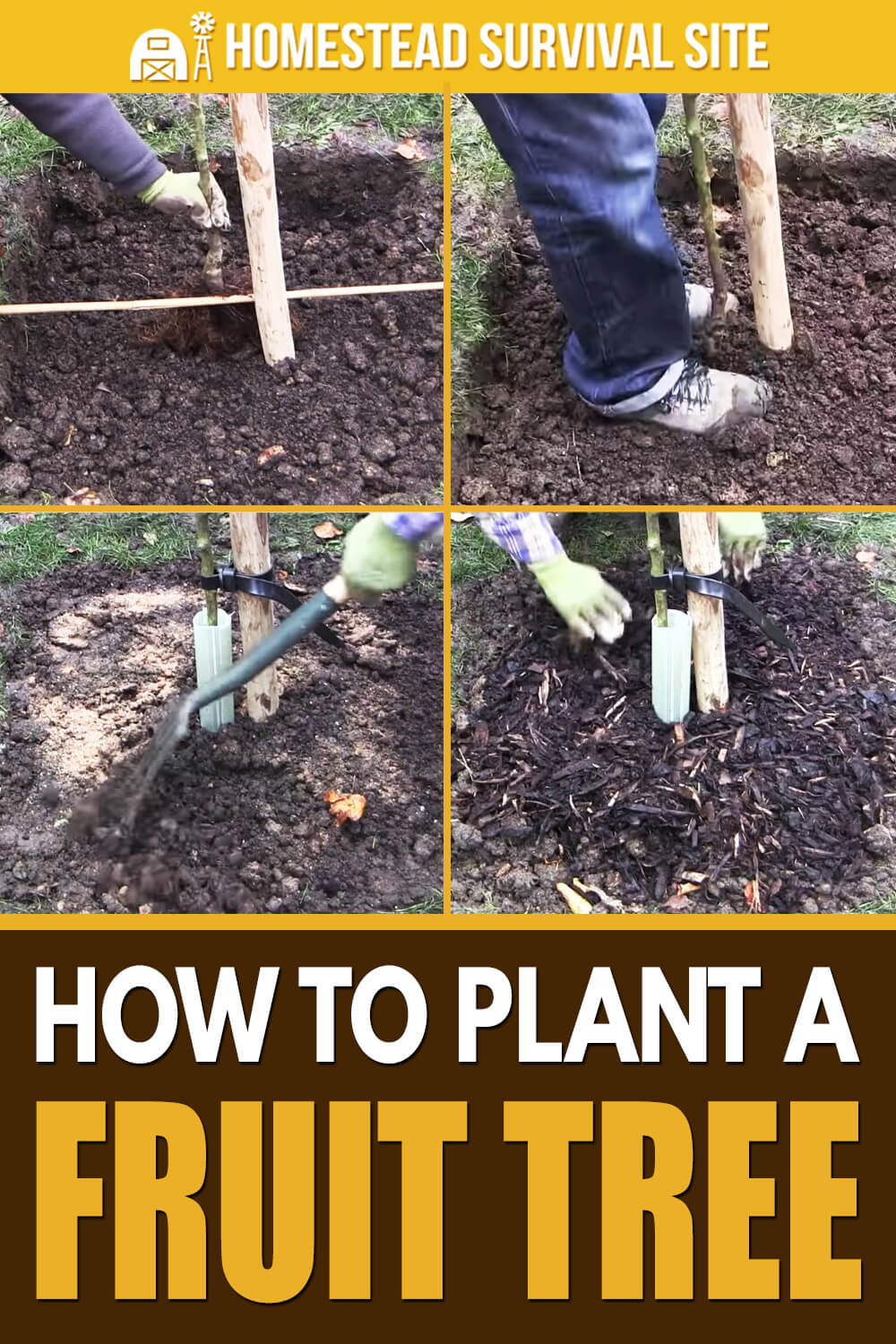Do you know how to plant a fruit tree? You may think it’s as simple as scooping a hole, dropping a seed into it, covering it up, and adding water periodically. In reality, it’s a little more complicated than that.
Want to save this post for later? Click Here to Pin It On Pinterest!
In this video, GrowVeg talks about how to plant a fruit tree. Here's a brief summary:
First and foremost, begin early. The time of year absolutely matters in regard to planting fruit trees. The best times are in the late winter or the early spring, such as February to April. You can purchase a seed where it is a bare-root, meaning that it comes to you without soil from a mail-order nursery.
Also, be strategic about where you plant your fruit tree. A fruit tree will need a minimum of six hours of sunlight a day, but seven to eight hours is preferable. Therefore, plant your tree outdoors in an area that will receive a minimum of six to eight hours of sunlight every day.
Another strategy is to place your tree in an area where it will receive the heat from a wall that the sun reflects off of. Cherry trees in particular thrive in such an environment.
Next, make sure you choose soil that will drain quickly. Otherwise, your tree stands a very good chance of developing fungal diseases.
You will need to dig a hole that is large enough to hold the roots. It’s up to you to research how big the roots are for which specific tree you are planting. Dig your hole accordingly. Just make sure the tree won't sink too far into the ground, which will happen if the soil is too loose beneath it.
As a golden rule, dig for as long as the roots are, and then add a cone of soil into the center of the hole. This will provide support for the tree so the main trunk will not sink into the ground later on.
Also as a golden rule, most fruit trees will be grafted six to eight inches above the root system, so orient the tree so that it faces North. This will not expose the weak link in the tree trunk to the sun. Fill the remainder of the hole with soil and then use a stream of water to hose it into place and get rid of air pockets.
After you plant the seed, be sure to dig a broad basin in a four-foot donut shape around the tree. This will form a berm on the outside edge that makes it very easy for you to capture rainwater.
Spread a layer around two to three inches of compost over this donut area, then another two or three inches of wood chip mulch. This will serve as a blanket to serve your roots for many years to come. Finally, pound stakes into the ground and tie your trunk to the stakes so it won't blow over in strong winds.
After two years, the tree should have developed a strong enough root system to hold up on its own, at which point you can remove the stakes.
For more information and to see how it's done, watch the video by GrowVeg below.
Like this post? Don't Forget to Pin It On Pinterest!











